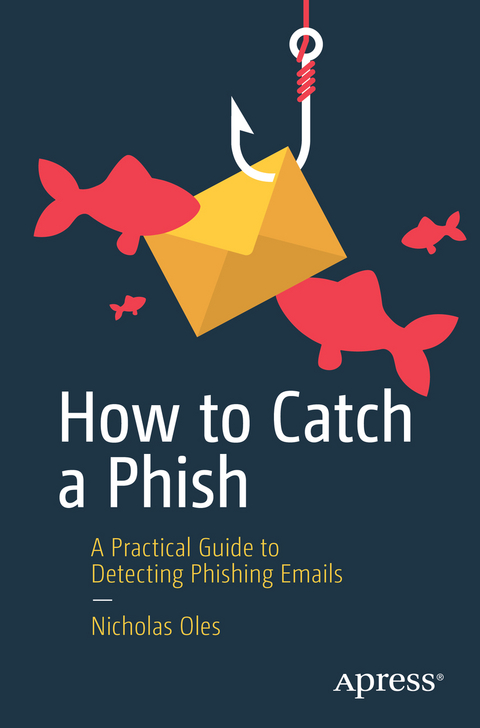
How to Catch a Phish
Apress (Verlag)
978-1-4842-9360-7 (ISBN)
Every organization and individual with an email account is susceptible to deceptive emails sent by attackers with nefarious intentions. This activity, known as phishing, involves an attacker attempting to lure individuals into providing sensitive information or performing a predetermined action. Attacks vary in sophistication, but the core skills and process to detect, analyze, and respond to a suspicious message does not change.
Attackers have preyed on victims with convincing and not-so-convincing phishing emails to gain initial footholds into networks around the world for over 30 years. This attack method has been rapidly growing in popularity and continues to be the number one method that organizations and individuals struggle to defend against. Regardless of what any vendor or organization will tell you, no infallible tool exists to eliminate this threat completely.
This book teaches you how to analyze suspicious messages using free tools and resources. You will understand the basics of email, tactics used by attackers, and a repeatable process to systematically analyze messages and respond to suspicious activity.
You Will Learn How to:
Safely save email messages as attachments for analysis
Identify what information is in an email header
Review header information and extract key indicators or patterns used for detection
Identify signs of a suspicious or malicious email message
Detect the tactics that attackers use in phishing emails
Safely examine email links and attachments
Use a variety of free and simple tools to analyze email messages
Who This Book Is For
Cybersecurity professionals and interested computer security enthusiasts currently holding or aspiring to obtain positions such as IT Security Analyst, Network Defender, Security Operations Center Analyst, or Help Desk Technician. Readers should have a general understanding of how email works and some ways that attackers use this platform for initial access.
Nick Oles is a cybersecurity expert with over 15 years of operational experience in military, industry, and academic environments. He has worked on incident response and threat hunting teams and consulted with Fortune 150 organizations, small businesses, and US Department of Defense entities. Nick has served his country for over a decade in the cyber and special operations communities, earning multiple military accolades, completing worldwide deployments, and serving in joint special operations environments. He has advised award-winning academic centers on cyber-program development and management, as well as created and taught academic and certification courses on a variety of cybersecurity topics. Nick has detected, analyzed, and responded to thousands ofsecurity incidents over his career. He continues to actively contribute to the cybersecurity community and teach students at all skill levels while still serving his country.
Chapter 1. How Email Works.- Chapter 2. Phishing Tactics and Techniques.- Chapter 3. PICERL Process explained.- Chapter 4. Analyzing Message Content.- Chapter 5. Links.- Chapter 6. Attachments.- Chapter 7. Log Searching and Response.- Chapter 8. Remediation and Lessons Learned.
| Erscheinungsdatum | 23.06.2023 |
|---|---|
| Zusatzinfo | 88 Illustrations, color; 3 Illustrations, black and white; XI, 147 p. 91 illus., 88 illus. in color. |
| Verlagsort | Berkley |
| Sprache | englisch |
| Maße | 155 x 235 mm |
| Themenwelt | Informatik ► Netzwerke ► Sicherheit / Firewall |
| Schlagworte | beacon • Cyber Attack • cybersecurity • Information Security • Initial access • Malware • Phishing • Suspicious email • Virus |
| ISBN-10 | 1-4842-9360-6 / 1484293606 |
| ISBN-13 | 978-1-4842-9360-7 / 9781484293607 |
| Zustand | Neuware |
| Haben Sie eine Frage zum Produkt? |
aus dem Bereich


